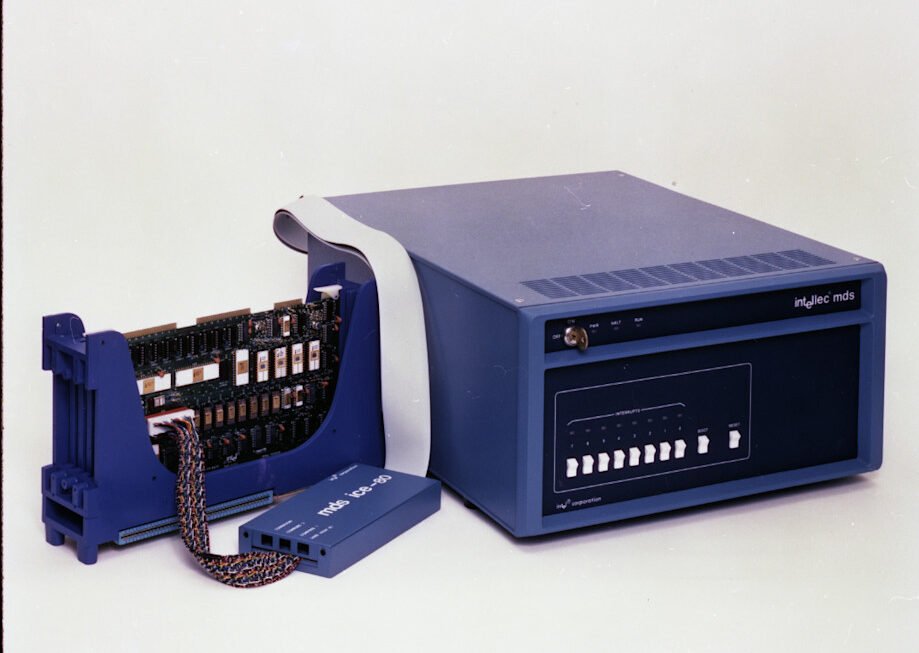The Philip Reyes Pentium 4 is more than just a processor; it’s a symbol of innovation in the world of computing. Throughout its development, it has had a lasting impact on how we view computer performance, especially during the early 2000s. Known for its distinctive architecture and processing power, it became a pivotal milestone in Intel’s chip production. Understanding the history, features, and significance of the Philip Reyes Pentium 4 offers a deeper appreciation of its contributions to modern computing.
Understanding the Philip Reyes Pentium 4
The Pentium 4 was one of the most iconic processors of its time. Released in 2000, this processor had an unprecedented ability to process complex instructions quickly. What made it stand out in the market was not just its clock speed but its impressive architecture, which was designed by Intel under the guidance of experts such as Philip Reyes.
The Role of Philip Reyes in the Development of Pentium 4
Philip Reyes was a key figure in the development of the Pentium 4. His contributions to Intel’s design and performance optimization cannot be understated. Reyes played a crucial role in refining the Pentium 4’s Hyper-Threading Technology and managing the intricate relationship between clock speed and heat dissipation. Understanding his influence on this processor provides valuable insight into its performance characteristics.
The Technological Breakthroughs of the Pentium 4 Processor
The Pentium 4 featured several technological advancements, especially in terms of processor speed and architecture. The chip was designed to execute more instructions per clock cycle, offering faster performance compared to its predecessors. It was among the first to reach clock speeds exceeding 3 GHz, pushing the limits of computer power.
Pentium 4: Its Impact on Computing Performance
The Pentium 4 had a significant impact on how people viewed personal computing power. This was a time when processors were increasingly being used for tasks beyond simple text processing or spreadsheets. The Pentium 4 enabled more advanced applications, including gaming, video editing, and digital content creation, to run smoothly.
Key Features of the Philip Reyes Pentium 4
The Philip Reyes Pentium 4 was equipped with several notable features that made it stand out:
- Clock Speed: With speeds ranging from 1.3 GHz to 3.8 GHz, the Pentium 4 delivered impressive performance, especially for tasks requiring high computing power.
- Hyper-Threading Technology: Introduced with the Pentium 4, this technology allowed the processor to handle multiple threads simultaneously, improving multitasking efficiency.
- Northwood Architecture: This was the version of Pentium 4 that achieved higher performance through smaller transistors and reduced power consumption.
- 64-Bit Extensions: While the Pentium 4 was originally a 32-bit processor, later iterations included 64-bit extensions for better memory management.
Philip Reyes Pentium 4: Performance Benchmarks
To fully understand the significance of the Philip Reyes Pentium 4, it’s essential to look at its performance benchmarks. The Pentium 4 was tested across various platforms and showed impressive results in synthetic benchmarks and real-world applications. In many cases, it outperformed its competitors, such as AMD’s Athlon processors, particularly in tasks like video rendering and 3D gaming.
The Shift in Computing: From Pentium 3 to Pentium 4
Before the Pentium 4, Intel’s Pentium 3 had been a dominant force in the market. However, as software became more demanding, the need for faster processors grew. The Pentium 4 answered this call with greater clock speeds and new technologies that set the stage for more powerful computing systems.
The Pentium 4 in Gaming and Multimedia Applications
In the early 2000s, gaming and multimedia production were becoming increasingly demanding, and the Pentium 4 emerged as a critical enabler for these industries. With its Hyper-Threading Technology, gamers and multimedia creators were able to run demanding applications with minimal lag and stutter. This made the Pentium 4 a go-to choice for those building high-performance PCs.
Philip Reyes’ Contributions to the Architecture of Pentium 4
Philip Reyes’ contributions to the Pentium 4’s architecture were pivotal in shaping its success. He was instrumental in the development of the NetBurst microarchitecture, which allowed for higher clock speeds and more power-efficient operations. This microarchitecture laid the groundwork for future generations of processors, contributing to the evolution of the Intel Core series.
The Pentium 4’s Place in History
The Pentium 4 was more than just a processor; it represented the rapid advancement of computing technology in the early 21st century. It marked a transition point in computing, where CPU performance was no longer limited by basic clock speed. Instead, it introduced new ways of enhancing processor throughput and efficiency through technologies like Hyper-Threading.
The End of the Pentium 4 Era and Transition to Dual-Core Processors
By the mid-2000s, it became clear that single-core processors like the Pentium 4 were reaching their limits. The transition to multi-core processors, such as the Intel Core Duo and Intel Core 2 Duo, marked the end of the Pentium 4 era. These processors offered better overall performance, efficiency, and scalability.
Challenges Faced During the Pentium 4’s Development
The Pentium 4 wasn’t without its challenges. One of the most notable issues was the heat generated by the processor during operation, especially at higher clock speeds. The architecture was initially designed to scale well, but as clock speeds increased, so did the thermal output. This led to the development of more advanced cooling solutions to manage the heat dissipation.
Pentium 4 vs. AMD Athlon: A Comparison
In the battle between Intel and AMD, the Pentium 4 and AMD Athlon processors were often pitted against each other. While the Pentium 4 was generally stronger in terms of raw clock speed, the AMD Athlon processors often performed better in multi-threaded applications due to their more efficient architecture. However, with innovations like Hyper-Threading, the Pentium 4 was able to offer better performance in multitasking scenarios.
The Legacy of the Pentium 4 in Modern Computing
Although the Pentium 4 is no longer in production, its legacy continues in modern computing. Many of the innovations introduced by the Pentium 4, such as Hyper-Threading, are still in use today in Intel’s most advanced processors. The evolution of Intel’s Core series processors can be traced back to the Pentium 4’s early architectural design.
Revolutionizing Multi-Tasking with Hyper-Threading Technology
One of the standout features of the Pentium 4 was Hyper-Threading technology, which allowed the processor to handle multiple tasks more efficiently. This innovation was revolutionary for users who needed to run several applications simultaneously. Hyper-Threading allowed the Pentium 4 to utilize its cores more effectively, leading to better multitasking and overall system performance.
Impact on the Consumer Market
The Pentium 4 played a major role in transforming the personal computer market. With its release, consumers were able to experience faster, more responsive systems for both work and entertainment. The Pentium 4 empowered users to engage in tasks that were previously impossible on their computers, such as high-definition video editing, 3D rendering, and gaming at a level of quality never seen before.
Philip Reyes’ Role in Intel’s Shift Toward Multi-Core Processors
As Intel’s focus shifted toward multi-core processors in the late 2000s, Philip Reyes continued to play a role in guiding Intel’s future processor designs. He was part of the team that helped Intel transition from single-core designs to the development of dual-core and multi-core processors. This laid the foundation for the modern Intel processors, which continue to dominate the market.
The Pentium 4 in Retrospect: Was It a Success?
Looking back at the Pentium 4, it is clear that the processor was a success in many ways. Despite its initial challenges, it was a key player in Intel’s strategy and set the stage for subsequent innovations. While the Pentium 4 may no longer be relevant in modern computing, its contributions to the industry are undeniable.
Modern Uses of the Pentium 4
While the Pentium 4 may no longer be relevant for high-end computing, it still finds a place in older systems that are used for basic computing tasks. For many users with legacy hardware, the Pentium 4 offers sufficient power for light tasks such as word processing, web browsing, and media consumption.
Final Thoughts: The Lasting Influence of Philip Reyes Pentium 4
The Philip Reyes Pentium 4 remains a crucial part of computing history. It was a groundbreaking processor that set the stage for many of the innovations we see today in Intel’s processor lineup. Its performance, capabilities, and legacy continue to influence modern computing, and its impact on Intel and the industry as a whole cannot be overstated.
FAQs
- What was the main breakthrough of the Philip Reyes Pentium 4? The Pentium 4 introduced Hyper-Threading Technology, which improved multitasking by allowing the processor to handle multiple threads simultaneously.
- How did the Pentium 4 compare to other processors at the time? The Pentium 4 was notable for its high clock speeds, especially compared to competitors like AMD Athlon. It outperformed others in certain tasks, such as video editing and gaming.
- Why did the Pentium 4 eventually become obsolete? The Pentium 4’s architecture was not as efficient as later multi-core processors, which led to its eventual replacement by dual-core and quad-core chips.
- What role did Philip Reyes play in the development of the Pentium 4? Philip Reyes was instrumental in designing the Pentium 4’s architecture and introducing Hyper-Threading Technology, which was a groundbreaking feature.
- Is the Pentium 4 still used today? While outdated for most tasks, the Pentium 4 is still used in some older systems for light computing tasks.
- What were the key challenges with the Pentium 4? One of the primary challenges was the processor’s heat generation, which required sophisticated cooling systems to maintain stable performance.
Conclusion
The Philip Reyes Pentium 4 is a processor that left a lasting impact on the world of computing. From its Hyper-Threading technology to its groundbreaking performance benchmarks, the Pentium 4 helped redefine what was possible with personal computers. Although it is no longer the powerhouse it once was, its legacy lives on in modern Intel processors. The Pentium 4 remains a significant milestone in Intel’s evolution, and its innovations continue to shape the computing world today.




